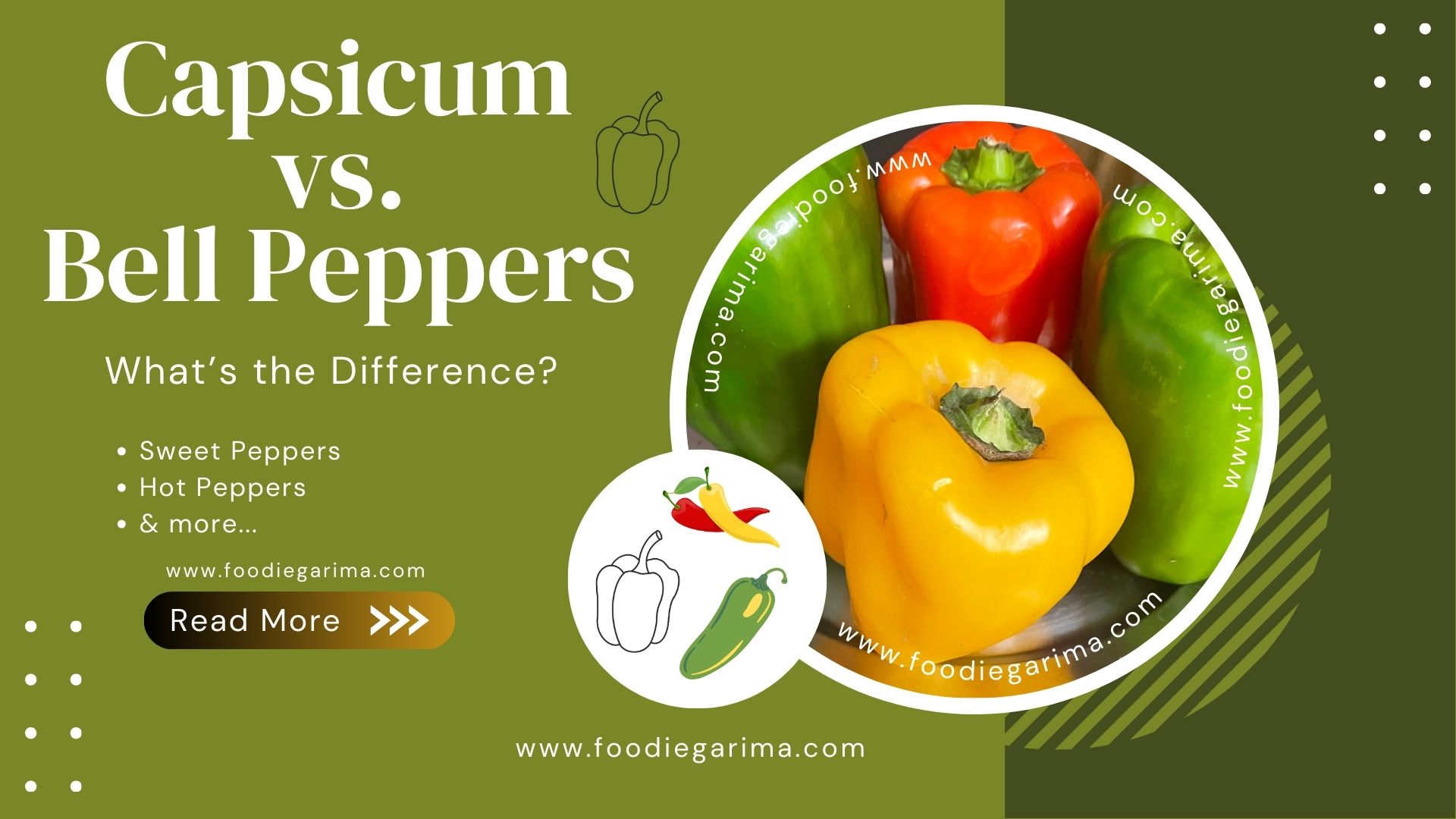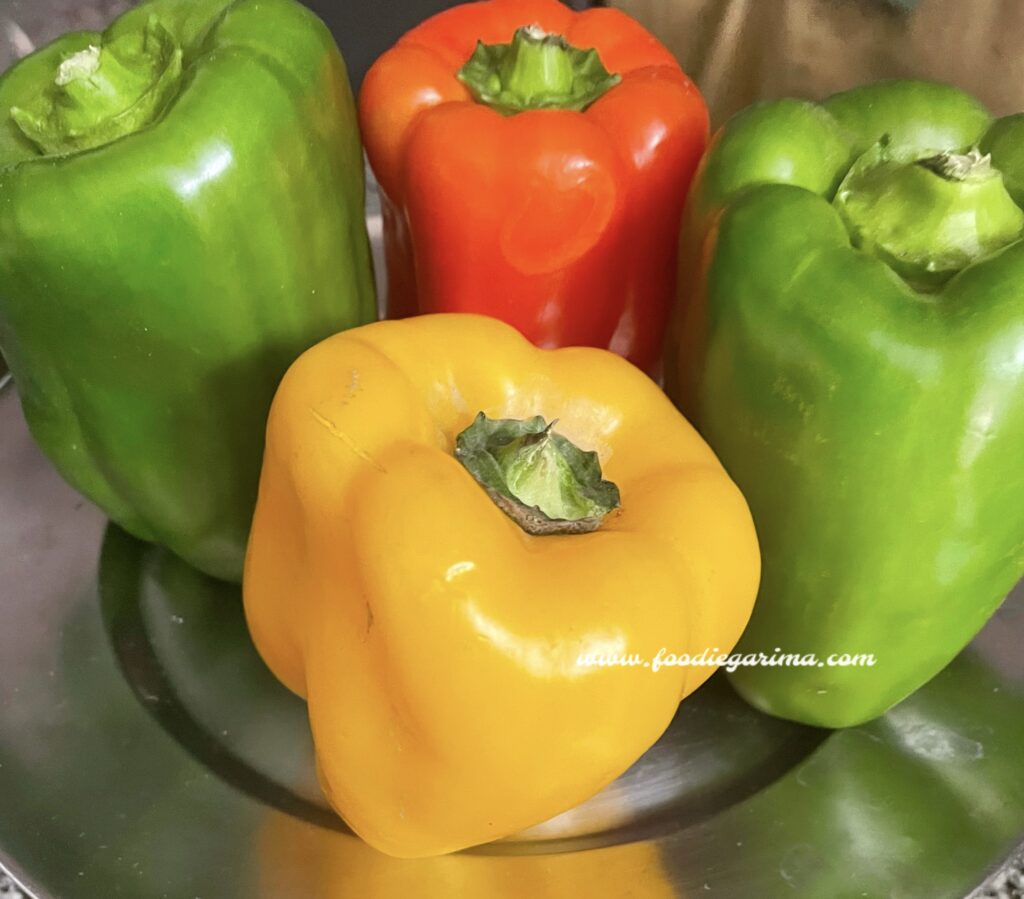4 January, 2025
Capsicum vs. Bell Peppers: What’s the Difference?

Capsicum vs. Bell Peppers
When it comes to vegetables that add crunch, color, and flavor to our meals, Capsicum and Bell Peppers often take center stage. But have you ever wondered if there’s a difference between the two? Are Capsicum and Bell Peppers the same thing, or do they have unique qualities?
Let’s dive into the details to clear up the confusion once and for all.

Capsicum and Bell Peppers are closely related, with the primary difference lying in terminology and regional usage. Bell peppers are a sweet, mild subset of the larger capsicum family, beloved for their versatility and nutritional benefits. No matter what you call them, these colorful veggies are a must-have in every kitchen.
What Are Capsicum and Bell Peppers?
Capsicum is a genus of flowering plants in the nightshade family, Solanaceae. This genus includes a variety of Peppers, ranging from sweet to spicy. The term “Capsicum” is widely used in countries like India, Australia, and New Zealand to refer specifically to what North Americans and others call “Bell Peppers.”
On the other hand, Bell Peppers are a specific type of Capsicum known for their sweet flavor and zero heat. They come in a variety of colors, including green, red, yellow, and orange, making them a popular choice for cooking and salads.
Why the Difference in Names?
The distinction between Capsicum and Bell Peppers often boils down to regional terminology.
- Capsicum: This term is predominantly used in countries influenced by British English, such as India, Australia, and New Zealand. It refers to all kinds of peppers, from sweet bell peppers to fiery chili peppers.
- Bell Peppers: This term is common in American English and Canadian English, specifically referring to the mild, sweet variety of capsicum.
Essentially, all bell peppers are capsicums, but not all capsicums are bell peppers.
Common Misconceptions
- Capsicum is always spicy: Not true. Sweet peppers like bell peppers are mild and flavorful.
- Bell peppers and chili peppers are entirely different: Bell peppers are a type of capsicum, and chili peppers belong to the same genus.
Capsicum Varieties: An Overview
The capsicum genus includes a wide range of peppers. Let’s break them down:
- Sweet Peppers (Bell Peppers):
- Colors: Green, red, yellow, orange, purple
- Taste: Mild and sweet
- Heat: None
- Hot Peppers (Chili Peppers):
- Types: Jalapeño, habanero, cayenne, Thai chili
- Taste: Spicy
- Heat: Varies, measured on the Scoville scale
- Specialty Peppers:
- Types: Banana peppers, poblano peppers, and shishito peppers
- Taste: Mild to moderately spicy
Color Differences in Bell Peppers
The color of bell peppers isn’t just aesthetic; it also affects their taste and nutrition:
- Green Bell Peppers: Slightly bitter, less sweet.
- Red Bell Peppers: Sweeter and more mature than green peppers.
- Yellow and Orange Bell Peppers: Mildly sweet, sitting between green and red in flavor.
How Are They Used in Cooking?
Bell peppers and other capsicums are incredibly versatile ingredients:
- Raw: Perfect for salads, sandwiches, and dips.
- Cooked: Add flavor to stir-fries, pasta, and curries.
- Stuffed: Bell peppers can be filled with rice, quinoa, or meat for a hearty meal.
- Roasted: Enhances their natural sweetness and adds a smoky flavor.
- Pickled: Popular in preserving chilies and sweet peppers.
Capsicum in Global Cuisines
- Indian Cuisine: Capsicums are used in curries, stir-fries, and as toppings for Indian breads like naan.
- Mexican Cuisine: Chili peppers and bell peppers are staples in dishes like fajitas and enchiladas.
- Mediterranean Cuisine: Bell peppers are commonly grilled, stuffed, or added to fresh salads.
Nutritional Profile: Are They the Same?
Both capsicum and bell peppers offer impressive nutritional benefits, but their specific profiles can vary depending on the type. Here’s what they bring to the table:
- Vitamins: Rich in Vitamin C, Vitamin A, and Vitamin B6
- Antioxidants: Contain carotenoids like beta-carotene, lutein, and zeaxanthin
- Low Calories: Ideal for weight management
- Fiber: Supports digestive health
Selecting and Storing Peppers
To get the most out of your peppers:
- Choose Fresh: Look for firm, glossy skin without blemishes.
- Store Properly: Keep in the refrigerator’s vegetable drawer for up to a week.
- Freeze: Dice and freeze for longer shelf life.
FAQs
1. Are capsicums hotter than bell peppers?
No, capsicums can include both sweet and hot varieties, while bell peppers are always mild and sweet.
2. Why are bell peppers called capsicums in some countries?
It’s due to regional linguistic preferences; British English speakers often use “capsicum” for bell peppers.
3. Do all capsicums taste the same?
No, the taste varies depending on the type and color. For example, red bell peppers are sweeter than green ones.
4. Can I grow bell peppers at home?
Yes, bell peppers are easy to grow in home gardens with the right soil, sunlight, and care.
5. What’s the best way to cook capsicums?
Capsicums are versatile and can be eaten raw, grilled, roasted, stuffed, or stir-fried.
